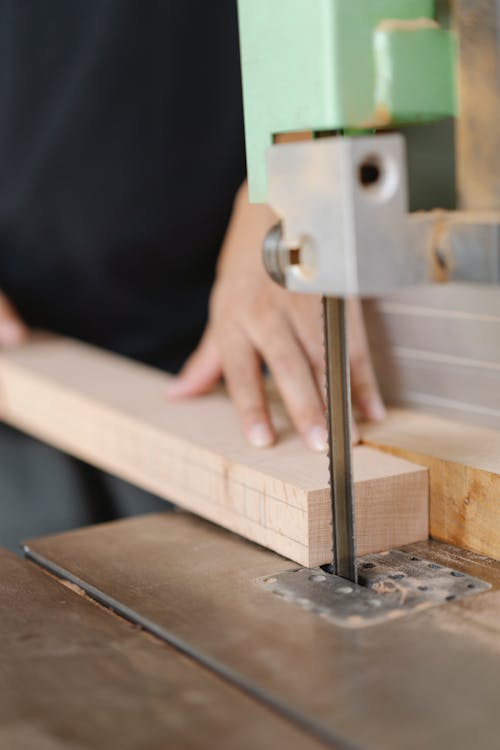
DIY Hammock Stands – Your Go-To Guides
There is nothing better than completing a project you’ve spent much time on that you can use daily. While buying a hammock stand takes relatively less time than making your own, the pride you will feel once you’re sitting back in your hammock soaking up the sun makes it worth it.
You no longer need to dream of lazy days lying in a hammock in your hard because the Bunnings team have an excellent tutorial for you to try, where you can buy all that you need from one store. You will love this option that costs considerably less than buying a frame, which is often more expensive than the actual hammock.
DIY Stand Supplies
Before you get started, you will require a range of materials to get started. These materials are essential to complete the task. A list of tools can be found on the bunnings website for your convenience, and we recommend looking through their guidance alongside our recommendations and instructions.
Essential materials include:
- 90mm x 90mm treated pine
- 90mm x 45mm treated pine
- 100mm bugle screws
- 10mm x 200mm dome head coach bolts with washers and nuts x 8
- Hammock hooks x 2
- Hammock – if you don’t already have one
- Paint – any colour of your choice
- PVA or wood glue
Let’s Start the Build – Moving Through the Steps

Step 1: Cutting the Timber
If you’re new to the DIY world, we recommend using your local Bunnings or other hardware stores pre-cut timber service. This is particularly useful if you don’t have access to or the space to keep your required tools.
Otherwise, cute the 90mm x 90mm treated pine to the recommended lengths:
- 2400mm x 1 (for the spine)
- 1500mm x 2 (for the uprights)
- 1500mm x 2 (for the feet)
For the 90mm x 45mm treated pine, the following length is required:
- 1150mm x 4 (for the supports)
Step 2: Mitre the Uprights
The following step is to set the mitre saw to 22.5° for cutting each upright as close to the edge as you’re able.
Step 3: Drill Holes
As we move along, we and Bunnings recommend pre-drilling holes using a 6mm drill bit from the upright and into the base. The timber is heavy to work with at this stage, so you may need assistance while holding the wood upright and flush with the stand.
Step 4: Attach the Uprights
As you begin the following steps, you will be required to use a drill and 100mm bugle screws. Now is when you drill them into the wood to attach the uprights into the base, repeat this, and step 3 for each upright.
Step 5: Clamp in Place
The supports need to be placed, so the 45° cut is square with the floor. Next, clamp in place and pencil an imprint at the overhang of the wood.
Step 6: Make a Cut
Now is the time to make an angled cut accurately as you set the saw to cut the timber to size. This and step 5 should be repeated for each support.
Step 7: Pre-Drill Holes
Next, we pre-drill holes again, but not before clamping supports back in place. Then, use a 10mm drill bit to pre-drill two holes through the top and bottom of the support and through to the base.
Step 8: Secure Support Pieces
The next step includes securing the support pieces by:
- Tap the 200mm dome head bolts through the base and supports.
- Place a nut on the end of the bolt – tighten.
- Repeat for all three holds on this support piece.
- Retake steps 7 and 8 for each support piece.
Step 9: Measure and Mark the Base Struts and Pre-Drill Holes
Use a measuring tape and measure the centre of each strut after you have placed them beneath the frame. Then using a drill and 10mm bit, pre-drill through the 1500mm timber and frame, but first, remove the timber.
Step 10: Base Strut Attachment
To start the attachment process, turn the base strut over so that you can insert the bots and hammer gently until they are flush to the surface. The following steps include:
- Lift the fame onto the bolts
- Hammer into position until snug
- Secure washers and nuts
- Tighten with a socket wrench
- Repeat for the next strut
- Cut the bolts to they’re flush with the nuts – use an angle grinder.
You’re almost done!

Step 11: Measure, Mark and Drill Holes for Attachments
Measure and mark where you want the hook the hammock and use a 10mm drill bit to create holes for them.
Step 12: Paint the Frame
Now is the time to get creative and paint your frame, whatever colour you like. You are only limited by your imagination.
Step 13: Attach Hooks
Place your hooks into the hole in the upright and the nut to the end before tightening it. Repeat for the other hook.
You’re Finished, Now What?
You’ve finished, so where to from here? If you already have a hammock ready to go, attach it to your hooks, then stand back and take a look at what you have achieved.
Find the perfect spot in your yard and enjoy many warm days sunning yourself, sitting back with some tunes or a book.
Why Make Your Own Wooden Hammock Frame?
There are many online tutorials for the same type of structures; we particularly appreciate the Bunnings version because it gives you a thorough list of necessary tools and materials. You can also get everything you need in one place – super convenient.
We believe making your own hammock frame is not only a fun weekend project you can do alone or do with a loved one, but you know how stable it is, is a cost-effective choice and can be painted or stained in stunning colours compared to what’s available pre-made.
It also means yours is going to look a little different to the rest. It will have your own flair to it and give you the chance to get creative.
Most tutorials are made from wood rather than powder-coated steel commonly made from pre-made versions because less specialised tools are required to complete the project.
Other Types of Hammock Frames
There are many different types of hammock chair frames that are sturdy, long-lasting and suitable for different scenarios. For example, if you’re hanging it from a tree, then all you need is a rope – check out this tutorial.
If you’re choosing to build your hammock chair stand from steel, there are a few online tutorials; however, click here for a guided tutorial that outlines the process. For someone who hasn’t worked with steel before, the degree of difficulty is somewhat more challenging than using a wooden design.
Alternatively, for further DIY ideas, you could attach a hammock chair to a swing set frame that is no longer in use.
FAQ
- Do I need to be an expert to make my own hammock stand?
All tutorials for a wooden hammock stand that we have discovered online seem fairly straightforward that anyone could have a go at making. However, some knowledge about tools and woodworking terms would help the project run more smoothly and benefit.
- What type of tools will I need?
The type of tools that you require will vary depending on the tutorials. However, a cordless drill, a hammer, a saw and safety gear all seem to be essential ingredients to the task. For this tutorial, all the necessary tools and materials are clearly listed on the Bunnings website.
- Would I need to do this project with more than one person to complete it?
Essentially this chair hammock stand can be made without the assistance of others. However, a small section of the task is better achieved with someone holding the heavy wood and would be more easily achieved with an extra set of hands.
- How much does it cost to make your own frame?
It is difficult to pinpoint an exact price because it will depend on the cost of wood, which can vary, but you also need to consider the number of tools you already own and those you will need to add to your collection to complete the task.
Generally, it is relatively cheaper to make your own compared to buying one new. A new hammock chair frame can cost anywhere between $120 and $400 depending on the materials they’re made from, their robustness and their size.
- Is it better to buy or build a hanging chair stand?
One way is not necessarily better than another. People often choose to buy their items because they are not handy with tools, like the convenience of simple purchase, or they feel more comfortable when frames are manufactured by professionals.
Alternatively, creative people like to have a go, save money and feel a sense of achievement by making their own. Making your own doesn’t mean it is any less sturdy than a bought one and is often just as long-lasting if not more than something you’ve paid twice the price for.